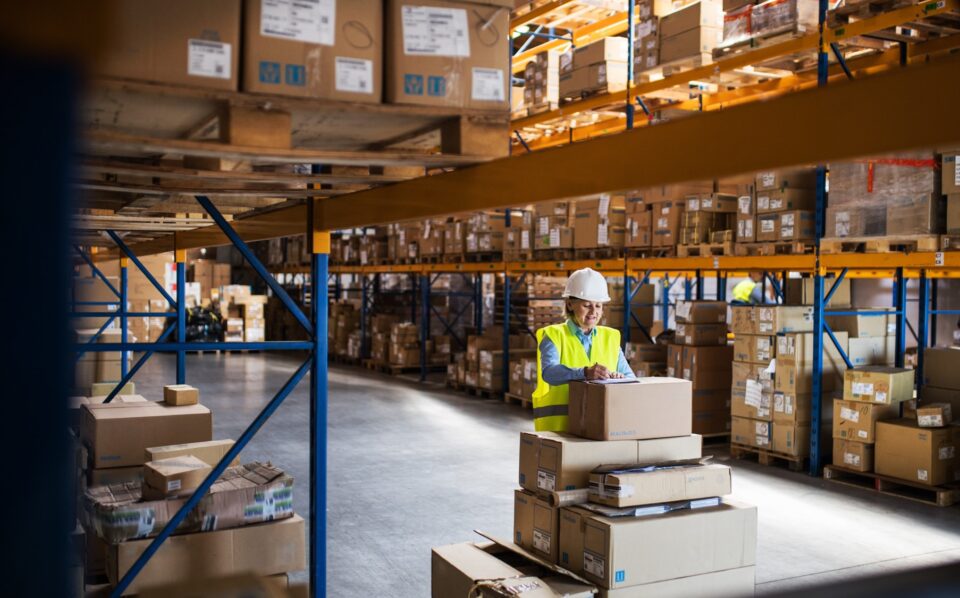
E-Invoicing and Its Geopolitical Stakes
France’s electronic invoicing reform relies on a Y-architecture, where Partner Dematerialization Providers (PDPs) play a central role in issuing and…
Generix Announces the Appointment of Olivier Vaillancourt as General Manager for North America View the press release

A customer has just placed an order on his preferred sales channel. On the retailer’s side, it is now necessary to locate the product in question in the warehouse. From this first step, two disaster scenarios are possible:
1) The product is out of stock. The retailer will then have no choice but to explain it to the customer, to manage his frustration, and to potentially erode his loyalty…
2) The product is well in stock – the inventory is formal – but impossible to get hold of it.
To avoid both of these situations, which are as damaging as they are time-consuming, effective daily inventory management is essential. It will not only ensure the availability of products, but also a full knowledge of storage locations and restocking needs.
A WMS (Warehouse Management System) will facilitate the management of stocks and warehouses. A WMS allows retailers to know, in real time, the state of their stock. It will also be possible to optimize their storage system thanks to algorithms capable of calculating, according to predefined criteria (space required, flow, accessibility…), the best location for each product. A best-seller can thus be stored as close as possible to its picking. For maximum efficiency, the coupling of the WMS with an OMS (omnichannel order management system) is essential. The OMS will automate all the tasks associated with orders: receiving the order regardless of the channel (telephone, web, etc.), managing customer relations, processing the order, invoicing, updating stocks in real time, etc.
For a product to arrive in good condition, it is essential that it is protected by adequate packaging: a fragile product will require an adapted packaging, as will a product with unorthodox dimensions. As for sending several products in the same parcel, it will be necessary to secure the different elements in the packaging and to ensure that the order is complete by including the order form. Integrating upstream a reflection on the packaging methods will be key to fluidify the processes and avoid wasting time. Not only will it be necessary to define the different sizes of boxes to be used according to the products to be sent, but also the type of protection needed and to have sufficient quantities of all this to ensure the shipments. Retailers can rely on a WMS to assist them in this process. The software package can indicate the ideal packaging on a case by case basis, issue the order form, automate the restocking of packaging boxes…
Another essential step is labeling. A wrong or incomplete label and the package could arrive late, or worse, never reach the customer. Therefore, special care must be taken with the labeling. However, label models vary according to the carrier and the destination (with specific customs constraints for shipments outside the EU, for example). To avoid disappointments, a digital solution capable of centralizing the various labels of your orders and of editing them on demand could prove to be extremely useful.
Digital tools will also allow to optimize the collection of parcels by the carriers – frequency of the passages according to the volume to be taken and the imperatives of the customers, modalities of collection determined in a few clicks via a web platform… – and then to automatically inform the customer that his order has been delivered to the carrier. When we know that customers tend to abandon a retailer who delivers in too long a time, presenting proof that the product has left the warehouse in time is essential !
And that’s not all. With a TMS (Transport Management System), a retailer will be able to optimize all stages of transport. The TMS will not only define the best possible routes (all the more necessary as the number of warehouses and distribution centers is high) but also choose, for each route, the most relevant carrier to contact in priority. A TMS will also improve the efficiency of loading plans in order to carry the maximum number of parcels in the minimum number of vehicles.
Focusing on the first mile of the supply chain ensures that your product’s journey begins under the best possible auspices. But don’t neglect the last mile, which remains the key to customer satisfaction.
To go further:

France’s electronic invoicing reform relies on a Y-architecture, where Partner Dematerialization Providers (PDPs) play a central role in issuing and…

The B2B mandate in Germany, set to take effect on January 1, 2025, marks a crucial step in the European…

Following the October 15 announcement regarding the abandonment of the PPF development, the DGFIP and its partner AIFE are ramping…

Work with our team to build your ideal supply chain software stack and tailor it to your unique business needs.